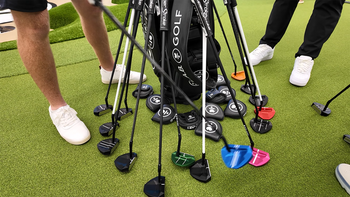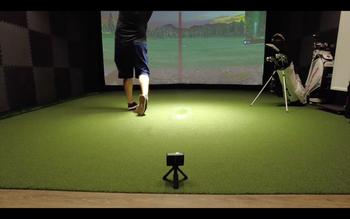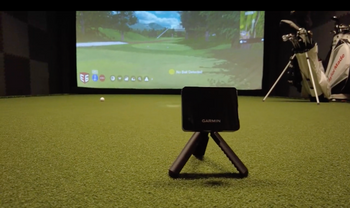You don't need to spend a fortune to play good golf. The right golf ball can transform your game, and plenty of excellent options exist under $25 per dozen. This guide helps you pick the perfect ball for your game without breaking the bank.
Table of Contents
Understanding Golf Ball Basics
Golf balls differ in construction, compression, and cover material. A ball's design affects distance, spin, and control. Two-piece balls offer durability and distance, while three-piece designs provide better feel and control. The compression rating tells you how much the ball compresses at impact - lower compression balls suit slower swing speeds, while higher compression balls work better for faster swings.
Best Pick - Titleist Trufeel Golf Balls
The Titleist TruFeel represents Titleist's entry into the value-focused golf ball market. This two-piece ball features a TruTouch core wrapped in a TruFlex cover, creating a combination that targets recreational golfers seeking performance at a lower price point.
The ball's construction focuses on maximizing distance while maintaining acceptable greenside control. The TruTouch core technology creates low spin off the driver, helping reduce hooks and slices - a common challenge for developing players. The 376 tetrahedral dimple pattern promotes a penetrating ball flight that performs well in windy conditions.
Titleist upgraded the TruFlex cover to version 3.0, making it 22% softer than previous models. This new cover design aims to balance durability with feel. The ball produces moderate spin rates on approach shots while resisting scuffs and cuts during normal play.
The TruFeel targets players with swing speeds under 95 mph. Its low compression rating helps these golfers achieve better distance through optimized energy transfer at impact. The ball launches high with irons but maintains a controlled trajectory with woods and hybrids.
Color options include traditional white, high-visibility yellow, and matte red. Each ball features alignment aids printed on the cover to help with putting accuracy. The TruFeel sells for around $25 per dozen, positioning it as a direct competitor to other value-focused balls like the Callaway Warbird and Wilson Fifty Elite.
This ball suits beginners, high-handicappers, and budget-conscious players who want reliable performance without premium pricing. While it won't match tour-level balls in spin control, the TruFeel delivers solid results across all aspects of the game.
Titleist Trufeel Golf Balls
Titleist TruFeel Golf Balls offer the softest feel and precision control for unbeatable short game performance.
Best Color Choice - Callaway Supersoft Golf Balls
The Callaway Supersoft golf ball stands as a cornerstone in the budget-friendly segment of the golf ball market. This ball revolutionized the category with its ultra-low compression core, rated at 38, making it one of the softest balls available.
The ball features a two-piece construction, combining a HyperElastic SoftFast Core with a hybrid cover developed through a partnership with Dow Chemical. The cover uses Paraloid technology, creating a unique blend of softness and durability. Callaway's proprietary HEX Aerodynamics pattern sets it apart from traditional dimple designs, reducing air resistance and promoting stable flight paths.
The Supersoft targets golfers with swing speeds under 95 mph, though it performs well across different skill levels. Its low compression design helps slower swingers generate more ball speed and distance, while the reduced spin characteristics help minimize hooks and slices. Around the greens, the soft cover provides reasonable control without sacrificing durability.
Through multiple iterations, Callaway has refined the Supersoft's design. The version showcases improved core technology for better energy transfer and an enhanced cover formulation for increased durability. The ball comes in several color options, including traditional white and matte finishes.
The Supersoft maintains its position as a top seller in the golf ball market due to its price-to-performance ratio. The ball delivers distance, straight flight characteristics, and a pleasant feel, making it a smart choice for recreational golfers seeking value without compromising performance.
Callaway SuperSoft Golf Balls
Callaway SuperSoft Golf Balls deliver unbelievably soft feel and straight flight for ultimate control.
Best For Durability - Piper Black Golf Balls
The Piper Black golf ball emerged from an Atlanta-based startup in February, targeting players who swing their drivers around 100 mph. This three-piece ball features a urethane cover, positioning it as a direct competitor to premium tour-level balls.
The ball's construction balances distance with control. Its core generates solid ball speeds while maintaining spin control for skilled players. The middle layer helps optimize launch conditions across different clubs, while the urethane cover delivers the spin control better players demand around the greens.
Performance testing shows the Piper Black produces a mid-trajectory ball flight with workable shot shapes. Players report consistent distances with irons and exceptional greenside control. The ball stops quickly on approach shots while maintaining enough roll-out on drives to compete with other premium options.
The ball stands out for its durability. The urethane cover resists scuffs and cuts better than many competitors, often looking fresh after multiple holes. This durability adds value, letting players use the same ball for more holes.
Priced at $29.99 per dozen (though recently increased to $34.99), the Piper Black costs less than mainstream tour balls. The company sells direct-to-consumer, eliminating retail markups. The ball suits low to mid-handicap players seeking tour-level performance without premium pricing.
Players praise the ball's soft but responsive feel, especially on and around the greens. The quiet "thud" at impact differs from the clickier sound of harder balls. While newer to the market, the Piper Black has built a following among skilled players seeking value without sacrificing performance.
Piper Black Golf Ball
Piper Black Golf Ball is engineered for elite players craving maximum distance and pinpoint accuracy.
Best For Distance - Srixon Distance Golf Balls
The Srixon Distance Golf Ball represents a specific engineering approach to golf ball design, focusing on maximizing carry and roll while maintaining playability for average golfers. This two-piece ball features an Energetic Gradient Growth core - a technology that creates a softer center that gradually becomes firmer toward the edges. This design promotes faster ball speeds while reducing spin off the driver.
The ball's cover uses a durable ionomer material, measuring 1.45mm in thickness. This construction choice prioritizes longevity and distance over the softer feel typically associated with urethane covers. The 324-dimple pattern differs from Srixon's premium offerings, which use 338 dimples. This specific pattern creates a penetrating ball flight that performs well in windy conditions.
With a compression rating of 89, the Srixon Distance targets players with moderate to high swing speeds. The higher compression helps reduce spin on full shots, leading to straighter drives and longer carries. The ball achieves this through its aerodynamic design and core technology.
Manufacturing takes place in Srixon's specialized facilities, where precise quality control ensures consistency across production runs. Each ball undergoes testing for weight, size, and initial velocity to meet USGA standards. The retail packaging contains one dozen balls, presented in a standard four-sleeve configuration.
The ball's performance characteristics show a bias toward distance over feel, making it popular among mid-to-high handicap players who prioritize length off the tee. While sacrificing some short-game control, the ball maintains adequate greenside performance for recreational players. The price point positions it in the value segment of the golf ball market, offering distance-focused technology at an accessible cost.
Srixon Distance Golf Balls
Srixon Distance Golf Balls deliver blistering drives and consistent performance at every level.
Best Ball Flight - Wilson Duo Soft Golf Balls
The Wilson Duo Soft represents a milestone in budget golf ball engineering. This two-piece ball features a 40 compression rating, making it the softest golf ball on the market. The ball's construction centers on an innovative core formulation that maximizes energy transfer at impact.
The ball's architecture combines a low-compression core with an ionomer cover, creating a balance between distance and feel. The 302-dimple pattern promotes stable flight characteristics across different weather conditions. Wilson's engineers focused on reducing driver spin while maintaining launch angles that benefit average golfers.
The Duo Soft sits at the entry-level of Wilson's ball lineup, below the premium Staff Model and mid-range Triad. The ball sells for $22.99 per dozen and comes in six color options: white, green, orange, red, pink, and yellow. This price point positions it as a value alternative to premium balls costing twice as much.
Testing reveals the ball produces a high launch trajectory with all clubs. The soft compression helps slower swing speed players generate more distance, though faster swingers might notice reduced control. Around the greens, the ball exhibits a springy feel that differs from urethane-covered premium balls.
The version builds on Wilson's 20-year history in the low-compression ball category. The company pioneered this segment, targeting recreational golfers who need help maximizing distance without sacrificing feel. The Duo Soft continues this tradition while incorporating new materials and manufacturing techniques to improve performance.
This ball targets mid-to-high handicappers seeking value and performance. The combination of distance, soft feel, and durability makes it popular among budget-conscious players who lose multiple balls per round.
Wilson Duo Soft Golf Balls
Wilson Staff Duo Soft Golf Balls are the world’s softest for unmatched feel and longer drives.
Best unique design - Taylormade Speedsoft Ink Golf Balls
The TaylorMade SpeedSoft Ink Golf Ball represents TaylorMade's entry into the budget-friendly, visually distinctive golf ball market. This two-piece ball features groundbreaking PWRCORE technology with a sub-50 compression rating, making it TaylorMade's softest ball ever produced.
The ball's standout feature lies in its distinctive paint-splatter design, available in four vibrant colors: green, blue, red, and pink. This visual technology builds on TaylorMade's success with the TP5 Pix series but brings similar visibility benefits to a more affordable price point.
The engineering focuses on balancing soft feel with distance performance. The large core design promotes easy compression for slower swing speeds while maintaining ball speed through TaylorMade's proprietary PWRCORE construction. A 322-dimple pattern helps create an aerodynamic flight path that reduces drag and promotes consistent ball flight.
The ball retails at $26.99/£26 per dozen, positioning it in the value segment of the market. TaylorMade designed the SpeedSoft Ink specifically for recreational golfers with moderate swing speeds who want both visual feedback and performance benefits.
The ball competes directly with other soft-feel budget options like the Callaway Supersoft and Srixon Soft Feel. Early testing shows the SpeedSoft Ink produces a mid-to-high launch with moderate spin rates, making it suitable for players seeking forgiveness and consistency.
Manufacturing takes place using TaylorMade's new color application technology, which required substantial investment in production capabilities. The ionomer cover provides durability while maintaining the soft feel that characterizes this ball's performance profile.
The SpeedSoft Ink marks TaylorMade's strategic move to capture market share in the growing segment of golfers who prefer non-traditional looking golf balls with enhanced visibility features.
TaylorMade SpeedSoft Ink Golf Ball
TaylorMade SpeedSoft Ink Golf Ball delivers explosive speed and bold visibility like nothing else on the course.
Choosing Your Ball
Your swing speed determines which ball compression suits you best. Players with speeds under 85 mph benefit from low compression balls. Faster swingers can handle higher compression ratings.
Consider your typical miss. High-spin balls magnify slice and hook tendencies. Low-spin options help keep shots straighter. The trade-off comes with less stopping power on approach shots.
Course conditions affect ball selection. Soft balls grip better on firm greens. Harder balls perform better in wet conditions and provide more roll on soft fairways.
Maximizing Performance
Store your golf balls at room temperature. Extreme heat or cold affects performance. Clean your ball between holes to maintain consistent flight characteristics.
Replace balls showing visible damage. Scuffs and cuts alter aerodynamics and affect accuracy. Budget balls tend to show wear faster than premium models.
Budget vs Premium Balls
The main differences between cheap and expensive balls lie in materials and construction complexity. Premium balls use costly urethane covers and multiple core layers. Budget options feature simpler two-piece designs with ionomer covers.
Tour pros use premium balls because they can manipulate spin rates for shot-shaping. Average golfers rarely generate enough clubhead speed to notice these differences. Many players score better with budget balls that minimize sidespin.
Common Questions About Budget Golf Balls
- Durability Concerns: Budget golf balls use tougher cover materials that resist scuffing. While they may not feel as soft as premium options, they often last longer under normal playing conditions.
- Game Improvement: Using the right ball for your swing speed and skill level improves consistency. Budget balls with low compression help slower swingers maximize distance and control.
- Replacement Schedule: Replace balls when you notice. Visible scuffs or cuts, Loss of distance, Erratic flight patterns, Discoloration.
- Used Premium vs New Budget: New budget balls provide consistent performance. Used premium balls offer uncertain quality and may have hidden damage. The predictability of new balls outweighs potential savings.
- Shot Selection: Different shots benefit from different ball characteristics. Budget balls excel at: Tee shots requiring distance, Full iron shots, Windy conditions, and Firm course conditions.
Making Your Choice
Test several ball models to find your match. Buy sleeves before committing to full dozens. Pay attention to:
- Distance off the tee
- Iron shot trajectory
- Feel on short shots
- Putting performance
The perfect golf ball balances performance with value. These budget options prove you don't need expensive balls to play good golf. You can focus on consistency and choose a ball that matches your game.
Remember that confidence matters more than cost. If a ball feels right and produces good results, stick with it. Your scores reflect shot execution more than ball price.
This guide helps you navigate the budget golf ball market. The right choice saves money while improving your game. Take time to experiment with different options and trust your results over marketing claims.
Frequently Asked Questions
Do budget golf balls affect my driving distance?
No, modern budget golf balls offer comparable distance to premium models. The key difference lies in spin control and feel around the greens. For most golfers, the distance gap between a $25 dozen and a $50 dozen is negligible, often just 2-3 yards with a driver.
How long do budget golf balls last?
A budget golf ball typically maintains peak performance for 7-10 rounds of golf. The ionomer covers used in balls like the Titleist TruFeel and Callaway Supersoft resist cuts and scuffs better than urethane covers found in premium balls.
Should beginners use budget or premium golf balls?
Beginners benefit from using budget golf balls. Lower-priced options like the Wilson Duo Soft+ and Srixon Soft Feel provide excellent distance and forgiveness. The lower spin rates help reduce hooks and slices, common issues for new players.
Can I use the same budget ball in all weather conditions?
Yes, but performance varies. Firmer balls like the TaylorMade Distance+ perform better in wet conditions, while softer balls like the Callaway Supersoft excel in dry weather. Temperature affects all golf balls - cold weather reduces distance regardless of price point.
Will switching to premium balls lower my scores?
For most amateur golfers, premium balls won't significantly impact scoring. Shot execution, course management, and consistency matter more than ball type. Many single-digit handicappers play budget balls successfully.
Conclusion
The budget golf ball market offers excellent options for every playing style. The Titleist TruFeel provides outstanding all-around performance, while the Callaway Supersoft excels for slower swing speeds. The Srixon Soft Feel balances distance and control, and the Wilson Duo Soft+ delivers an unmatched feel. The TaylorMade Distance+ serves players seeking maximum yards.
Your choice should match your swing characteristics and playing goals. Test different models to find your ideal balance of performance and value. Focus on consistency and results rather than price tags. The right budget ball can help you play better golf while keeping more money in your pocket for green fees and practice time.

















